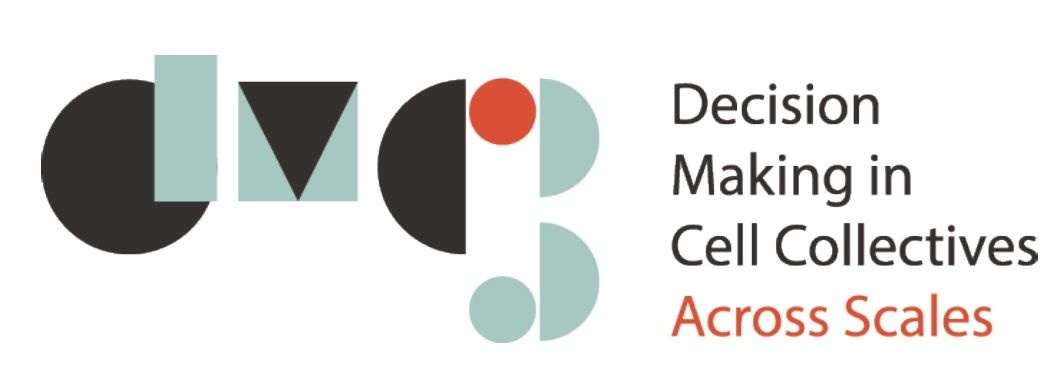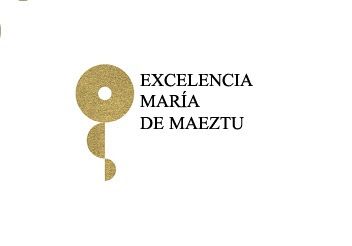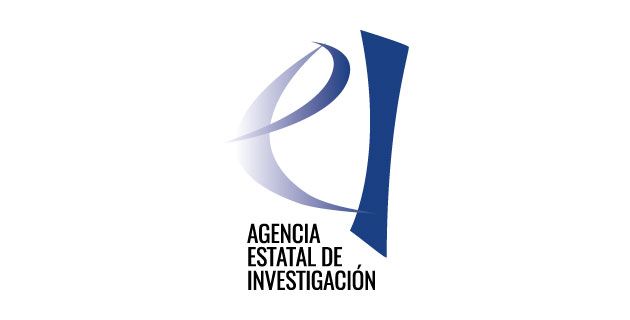
Workshop: MECHANOBIOLOGY OF TISSUE MORPHOGENESIS AND DISEASE/B165
Rodrigo Fernández-González. University of Toronto, Toronto, Canada
María Dolores Martin-Bermudo. Centro Andaluz de Biología del Desarrollo CSIC-Universidad Pablo de Olavide, Sevilla, Spain
-
pendiente inicio
-
Desde: 21 Octubre 2025
-
Hasta: 23 Octubre 2025
-
Presencial
-
Investigadora
-
Prerentemente inglés
-
20 horas
-
400 euros
-
35
An outstanding question in biology is how cells coordinate their behaviours. The fundamental importance of collective cell behaviours is best appreciated when considering a developing embryo. In an embryo, the collective contraction of cell surfaces generates buckling forces that fold tissues, for example during gastrulation or neural tube closure. Coordinated cellular rearrangements contribute to the elongation of limbs and the formation of the primitive streak, the future midline of the embryo. Collective cell migration, for example of neural crest cells, facilitates the formation of tissues while maintaining embryonic integrity. Defects in coordinated cell behaviour result in a range of developmental disorders, including congenital heart disease and neural tube defects, which together affect more than 1 in 100 newborns. And yet, despite their importance, the mechanisms by which cells act collectively during embryo development remain poorly understood.
Mechanical signals are fundamental players that coordinate cell behaviours. During early development, embryos are predominantly formed by epithelial tissues in which cells adhere to each other through physical contacts known as cell-cell junctions. Junctions are formed by transmembrane proteins that connect cells by binding to the junctional proteins of neighbouring cells. In addition, cells use integrins, a set of transmembrane receptors, to adhere to the extracellular matrix. Cell-matrix adhesion anchors tissues and allows cells to generate traction as they migrate. Inside the cell, cell-cell junctions and cell-matrix adhesions interact with the cytoskeleton, a filamentous network that provides structural support and generates mechanical forces. The integration of adhesive and cytoskeletal protein networks allows cells to coordinate their behaviours by transmitting forces from one cell to another, as well as to and from the substrate.
In this workshop, we will discuss the impact of mechanical forces on collective cell behaviour and embryonic development in a variety of model organism, including worms, flies, frogs, fish and mice. We will explore recent advances in our understanding of the molecular players involved in generating and sensing mechanical cues. We will examine the interplay between chemical, mechanical, and genetic signals in the regulation of adhesive and cytoskeletal networks in collective cell behaviour, and the fundamental role that mathematical models play in the interpretation of the complex relationships between signalling modalities. Finally, we will survey how redistribution and reorganization of adhesive and cytoskeletal proteins promote cellular dynamics that result in large-scale cell and tissue movements in developing embryos.
-
Plan de estudios
MEETING PROGRAM
October 20, Monday
18:00-20:00: Registration20:30: Dinner
October 21, Tuesday
8:00-8:45: Breakfast9:00-9:15: Opening remarks
9:15-11:00: Single and collective cell migration
9:15: Ronen Zaidel-Bar - “Directed invasion and differential cell-matrix adhesion guide gonad morphogenesis in C. elegans”9:45: Katja Röper - “The cell biology of dynamics epithelia during organ formation: mechanisms and mechanics“
10:15: Neophytos Christodoulou - “Calcium transients regulate epithelial integration of multiciliated cells during Xenopus skin development“
10:45: 15 min talk to be selected from the abstracts
11:00-11:30: Coffee break
11:30-12:45: Cytoskeletal dynamics in development
11:30: Ana Carvalho - “Distinct functionalities of actin-filament crosslinkers in vivo”12:00: Rodrigo Fernandez-Gonzalez - “Collective cell movements: cellular and molecular dynamics at the leading edge“
12:30: 15 min talk to be selected from the abstracts
13:00: Lunch
16:00-18:00: Poster session
18:30-20:15: Mechanobiology of development and disease
18:30: Rita Mateus - “Controlling growth across scales”19:00: Jody Rosenblatt - “Extrusion: an exciting beginning to an end”
19:30: John Wallingford - “Body sculpting: how the embryo constructs itself“
20:00: 15 min talk to be selected from the abstracts
20:30: Dinner
October 22, Wednesday
8:00-8:45: Breakfast9:15-11:00: Cell adhesion dynamics in tissue morphogenesis
9:15: Maria Dolores Martin Bermudo - “Mechanical coupling between the cytoskeleton and cell-ECM adhesion: a key to morphogenesis”9:45: Ann Miller - “Epithelial cell-cell junction remodeling in response to cell- and tissue-scale forces”
10:15: Guy Tanentzapf - “Strength in diversity: why cell adhesion molecules have so many ways to link to the cytoskeleton”
10:45: 15 min talk to be selected from the abstracts
11:00-11:30: Coffee break
11:30-12:45: Measuring and interpreting forces in developing animals
11:30: Yanlan Mao – “Coping with mechanical stress during development and repair”12:00: Nicola Elvassore - “Quantifying mechanical forces during vertebrate morphogenesis”
12:30: 15 min talk to be selected from the abstracts
13:00: Lunch
15:00-17:00: Poster session
18:00-20:00: Guided tour of Baeza
20:30: Dinner
October 23, Thursday
8:00-8:45: Breakfast9:15-10:15: Mechanochemical patterning
9:15: Yohanns Bellaiche - “Mechanosensing in epithelial tissues”9:45: Jennifer Zallen - “Signals, forces and cells: decoding tissue morphogenesis“
10:15-10:30: Concluding remarks
11:30: Bus departure
-
Rodrigo Fernández-González. University of Toronto, Toronto, Canada
María Dolores Martin-Bermudo. Centro Andaluz de Biología del Desarrollo CSIC-Universidad Pablo de Olavide, Sevilla, Spain
Yohanns Bellaiche. Institute Curie, France.
Ana Carvalho. Institute for Health Research and Innovation, Portugal.
Nicola Elvassore. University of Padova. Italy.
Yanlan Mao. University College London. United Kingdom.
Rita Mateu. Max Planck Institute of Molecular Cell Biology and Genetics, Germany.
Ann Miller. University of Michigan. United States.
Katja Roper. Cambridge University. United Kingdom.
Jody Rosenblatt. King’s College. United Kingdom.
Neophytos Christodoulou. University of Cyprus. Cyprus.
Guy Tanentzapf. University of British Columbia. Canada.
John Wallingford. University of Texas. United States.
Ronen Zaidel-Bar. Tel Aviv University. Israel.
Jennifer Zallen. HHMI, Sloan-Kettering Institute. United States.
María Dolores Martin-Bermudo. Centro Andaluz de Biología del Desarrollo CSIC-Universidad Pablo de Olavide, Sevilla, Spain
Rodrigo Fernández-González. University of Toronto. Canada.
The target audience for this workshop are active researchers in the field of morphogenesis, using both vertebrate and invertebrate model systems. Graduate students, postdoctoral scientists and junior faculty are particularly encouraged to apply. Preference will be given to applicants who submit an abstract and are willing to present their research in poster or podium format.
This multidisciplinary workshop aims to tackle the impact of mechanical forces on embryonic development, exploring recent advances in our understanding of the interplay between chemical, mechanical, and genetic signals in generating and sensing mechanical cues, by providing a valuable platform for researchers working with different model organisms to exchange knowledge, share recent findings and foster collaborative efforts, in order to accelerate advancements in the field. Attendance is restricted to 35 people to complete a group of 50 including the invited speakers. A major objective of this workshop is to promote interaction between junior scientists (young PIs, postdoctoral fellows, graduate students) and well-recognized senior investigators in the field. Both the venue and the small number of attendants will provide a unique forum for fruitful discussions to exchange knowledge, share recent unpublished findings and foster collaborative efforts. "See application guidelines”.
FORMATE OF THE WORKSHOP:
The workshop will bring together 15 speakers and a maximum of 35 participants, consist of platform and poster sessions. The scientific programme will start in the morning of Tuesday October 21st and will end in the morning on Thursday October 23rd. Ample time for informal discussion will be reserved. Participants are encouraged to present a poster. A considerable number of submitted abstracts will be selected for short talks.
VENUE OF THE WORKSHOP:
The workshop will be held in Baeza, at the “Antonio Machado Headquarters”, a XVII century building turned into a Conference Centre of the International University of Andalusia (UNIA). A complex made up of two historic buildings: the Jabalquinto Palace (XV/XVI centuries) and the old Seminary (XVII century) located in the heart of the historic complex, among the old University, church of Santa Cruz, the cathedral and the Upper Town Halls.
This site includes a recently restored residence, where speakers and participants will be accommodated. This same space is where the meetings will be held, which facilitates social interaction and informal discussions.
Baeza is a world historic heritage town, renowned for its Renaissance and Gothic buildings.
ACCOMMODATION:
We recommend all participants to stay in the University Residence, which is located in the same space where the Meetings will take place, to facilitate social interaction and informal discussions.
The accommodation in the University Residence is in shared double rooms, € 20/day and single rooms € 40/day. To make the reservation and the corresponding payment you must be previously registered for the workshop and then contact:
WORKSHOP REGISTRATION:
A) Applicants must complete an application form and submit it, along with:
A brief C.V.
A summary of the current research work of the candidate.
In case of presenting a poster, a summary of the poster of no more than one page, with the title, authorship, research center/institution/university, address and a summary of the communication.
See section "presentation of panels and posters”.
SEE LINK TO:
Application form (odt)
Application form (doc)*:
En cumplimiento del Reglamento General de Protección de Datos (Reglamento (UE) 2016/679), se le informa que los datos personales que se puedan recopilar se incorporarán y procesarán en algunos de los archivos de la Universidad Internacional de Andalucía (UNIA); los datos pueden divulgarse según lo previsto por la ley.
La autoridad responsable de los datos es: UNIA: Secretaría General (Secretario General). C / Américo Vespucio nº 2, Isla de la Cartuja. 41092 - SEVILLA, ESPAÑA.
Puede ejercer sus derechos de acceso, rectificación, eliminación y oposición contactando por escrito con la dirección mencionada anteriormente, a la atención del Delegado de Protección de Datos, o enviando un correo electrónico a
B) Send the completed Application Form (doc/odt) and the attached documents as separate text files and in a single email message, to
Selected applicants (with or without poster) will be notified directly. From that moment on, they must pay the corresponding registration fees*.
WORKSHOP FEES 2024:
Registration: 400,00 € (breakfast, lunch, coffe-breaks and dinner included)
Payment method: bank transfer to ‘La Caixa’
IBAN (international bank account number): ES78 21009166752200074348
SWIFT (BIC): CAIXESBBXXX
Registration fees deadline 12 September 2025
Selected applicants must indicate their full name and code number (it will appear in the webpage) in the bank transfer. After completing your payment by bank transfer, a proof of payment must be sent to:
The bank charges generated by the bank transfer will be paid by the applicants/attendees.
o For the oral presentation of posters it is essential to have formalized registration and payment of the Workshop.
o The co-directors of the Workshop will indicate and assign the session in which to present the work.
o The organization will certify the effective presentation of each panel/poster during the Workshop.
o Each author individually or collectively may present a maximum of 2 panels.
o Researchers may display their panel in the campus facilities. To do this, they must bring their work printed in DIN A0 vertical format (84.1 x 118.9 cm) and arrange it in the provided fastening systems.
Panel/poster contents:
• Title: Arial bold 14 points.
• Subtitle (if applicable).
• Authorship (individual or collective).
• Keywords: maximum 4.
• Presentation / Summary of content: 120 words.
• Methodology: 100 words.
• Description and contents: through text and graphics.
• Conclusions: maximum 100 words
• Sources and essential bibliography.
• Format: to transfer digitally DIN A4; PDF. Type: Arial. Body: minimum 9 and maximum 12 points.
Matrícula y becas
Situación actual:
-
pendiente inicio
Conoce nuestro propio programa de becas y consulta en las bases de la convocatoria los casos donde la beca contempla exención de precios o una ayuda económica.
Los estudios de formación continua son enseñanzas de ampliación, especialización, perfeccionamiento y/o actualización de conocimientos destinados a cubrir áreas temáticas concretas de interés, con unos objetivos bien definidos, que permiten responder de una forma ágil y eficaz a las distintas demandas de conocimiento de la sociedad.
No están sujetos a requisitos de acceso.
Programa de becas y ayudas de la Universidad Internacional de Andalucía.
La Universidad Internacional de Andalucía, como complemento a las convocatorias de la Administración General del Estado y de la Comunidad Autónoma, en el ejercicio de sus competencias y de acuerdo con su disponibilidad presupuestaria, establecerá para cada curso académico un programa de becas y ayudas al estudio.
Las modalidades y cuantías de las becas y ayudas, las condiciones académicas y económicas que hayan de reunir los candidatos, el procedimiento de gestión, así como los supuestos de incompatibilidad, revocación y reintegro y cuantos requisitos, condiciones socio-económicas u otros factores sean precisos para el acceso a las citadas becas y ayudas se regularán por su propia normativa que, en todo caso, debe asegurar los principios de igualdad y equidad, atendiendo a la promoción del rendimiento académico.
Para cualquier incidencia técnica durante su automatrícula, puede contactar con la dirección de correo electrónico:
Enlace al Manual de ayuda a la automatrícula
Los precios públicos a satisfacer en la matrícula serán determinados en la convocatoria de la actividad ofertada.
La eficacia de la matrícula formalizada y de los actos administrativos que de ella pudieran derivarse quedará demorada hasta tanto no se produzca el pago de la totalidad de los precios públicos establecidos. El impago de la misma implicará el desistimiento de la solicitud de matrícula.
La Universidad Internacional de Andalucía acreditará los logros académicos obtenidos por sus estudiantes mediante la emisión del correspondiente certificado de asistencia o diploma de aprovechamiento, siempre que el estudiante haya asistido al 80% de las clases. El certificado de asistencia se expedirá en aquellos casos en que el programa no contemple ninguna evaluación o el/la alumno/a no la haya superado. Si el programa cuenta con evaluación y el/la alumno/a la supera, recibirá un diploma de aprovechamiento con la calificación obtenida. Estos documentos se emitirán una vez cumpla el alumnado con los requisitos establecidos en la convocatoria para su expedición.

Jornadas- Soluciones prácticas para un control efectivo del asma

Liderando la innovación en las finanzas cooperativas: finanzas éticas, sostenibilidad y nueva gobernanza para la transición socioecológica




